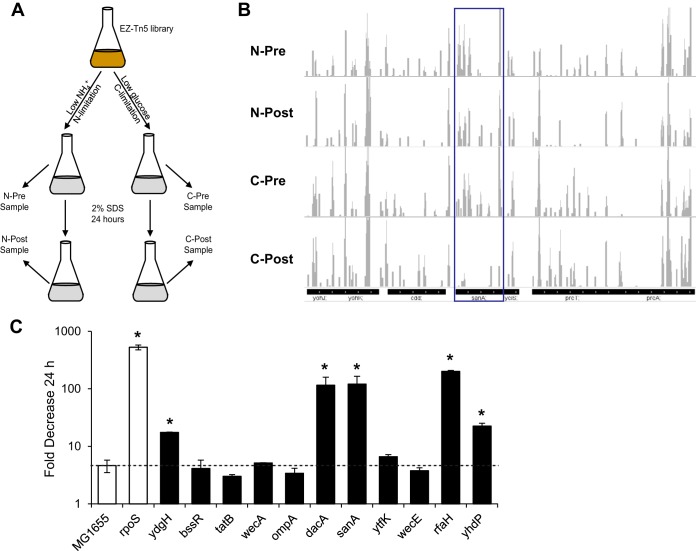FIG 6.
Tn-Seq to identify genes responsible for SDS resistance in C-limited cells. (A) In the experimental strategy for the Tn-Seq experiment, a large library of Tn5 mutants was grown under either carbon or nitrogen limitation and then treated with 2% SDS for 24 h. DNA samples were collected and transposon junctions were sequenced both pre- and posttreatment. (B) Sequenced transposon junctions were mapped to the MG1655 genome, and a histogram for a sample region of the genome is shown. The boxed region indicates a gene, sanA, for which sequencing reads decreased more than 3-fold under carbon-limiting conditions but did not change under nitrogen-limiting conditions. Scale, 0 to 500 reads. (C) Strains with deletions in the indicated genes were grown under carbon limitation and treated with 2% SDS. Viability was assayed at 24 h of treatment. The fold decrease in the treated samples versus the untreated samples is shown (untreated sample/treated sample). Open bars indicate control strains, while filled bars represent strains with deletions in genes identified in the Tn-Seq experiment as causing SDS sensitivity only under carbon-limiting conditions. A dotted line indicates the fold decrease in wild-type MG1655. *, P < 0.05, for comparisons with results for MG1655.

